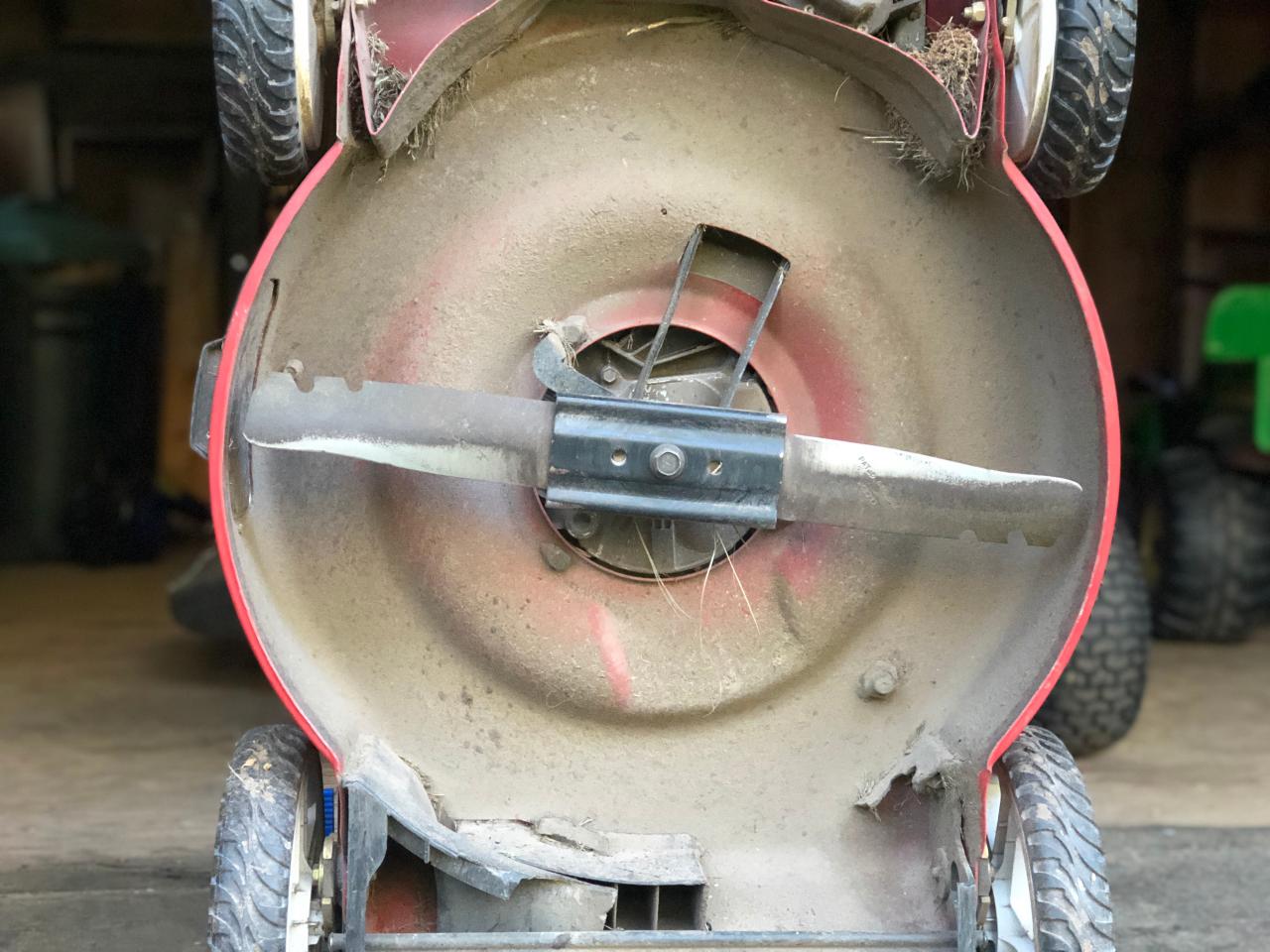
In the realm of lawn care, a well-maintained lawn mower stands as a trusty companion, tirelessly battling overgrown grass and maintaining pristine green carpets. However, even these stalwart machines can fall victim to the passage of time, their once-sharp blades becoming dull and ineffective.
Dull lawn mower blades can wreak havoc on your lawn, leaving behind uneven cuts, torn grass blades, and increased mowing time. They can also put a strain on your mower’s engine, leading to reduced efficiency and potential damage.
Fear not, fellow lawn care enthusiasts! This comprehensive guide will equip you with the knowledge and tools to keep your lawn mower blades sharp and your lawn healthy.
Understanding the Importance of Sharp Blades
Imagine your lawn mower blades as tiny scissors. Just as dull scissors struggle to cut paper cleanly, dull lawn mower blades struggle to slice through grass blades. Instead, they tear and pull, leaving behind ragged edges and an unhealthy lawn.
Sharp blades, on the other hand, glide through grass like a hot knife through butter. They create clean cuts that promote healthy growth, reduce the risk of lawn diseases, and make mowing a breeze.
Recommended Sharpening Frequency: A Balancing Act
The frequency with which you should sharpen your lawn mower blades depends on a variety of factors, including lawn size, grass type, mowing frequency, and the presence of obstacles. As a general rule of thumb, aim to sharpen your blades 2-3 times per mowing season.
For smaller lawns with less frequent mowing, you may be able to get away with sharpening once a season. However, for larger lawns, tougher grasses, or frequent mowing, more frequent sharpening may be necessary.
Signs of Dull Blades: A Call to Action
Just like a dull knife can reveal itself through uneven cuts and torn food, dull lawn mower blades send out their own distress signals. Here are some telltale signs that your blades need some love:
-
Uneven Mowing: If your lawn looks patchy and uneven, with some areas taller than others, it could be a sign that your blades are dull and struggling to cut consistently.
-
Torn Grass Blades: Take a closer look at the individual grass blades after mowing. If they appear torn and frayed rather than cleanly cut, it’s another indication that your blades need sharpening.
-
Increased Mowing Time: If it seems like it’s taking longer and longer to mow your lawn, even with regular maintenance, dull blades could be the culprit. Dull blades require more effort to cut grass, leading to longer mowing times and increased fuel consumption.
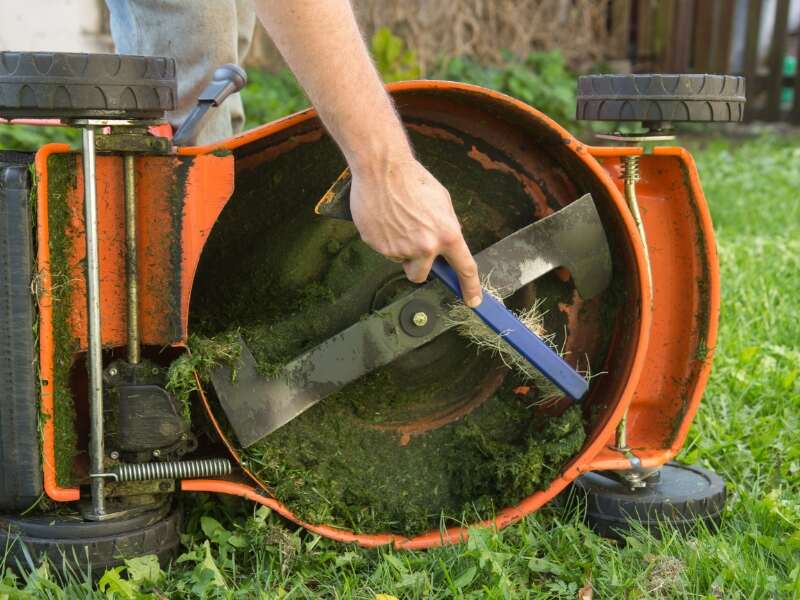
Sharpening Methods: DIY or Professional?
The path to sharp lawn mower blades can be taken in two ways: the DIY route or the professional approach. Each has its own advantages and disadvantages.
DIY Sharpening: A Hands-on Approach
For the DIY enthusiast, sharpening lawn mower blades can be a rewarding and cost-effective task. With the right tools and a bit of know-how, you can restore your blades to their former glory.
Two common methods for DIY sharpening are using a sharpening stone and using a bench grinder. A sharpening stone is a handheld abrasive tool that allows for precise control over the sharpening process. A bench grinder, on the other hand, is a powered tool that can sharpen blades more quickly and efficiently.
Professional Sharpening: Convenience and Expertise
If you’re short on time, lack the necessary tools or experience, or simply prefer the peace of mind that comes with professional care, seeking out a reputable lawn mower sharpening service is a great option.
Professional sharpeners have the expertise and equipment to handle even the most complex sharpening tasks, ensuring that your blades are sharpened to the correct angle and with the utmost precision.
Preventive Maintenance: Keeping Blades Sharp for Longer
While regular sharpening is essential, there are steps you can take to extend the lifespan of your lawn mower blades and reduce the frequency of sharpening.
-
Regular Cleaning: After each mowing session, take a few minutes to clean your lawn mower blades, removing any grass clippings or debris that can accumulate and dull the edges.
-
Proper Storage: When storing your lawn mower for the off-season, ensure that the blades are clean and dry to prevent rust and corrosion.
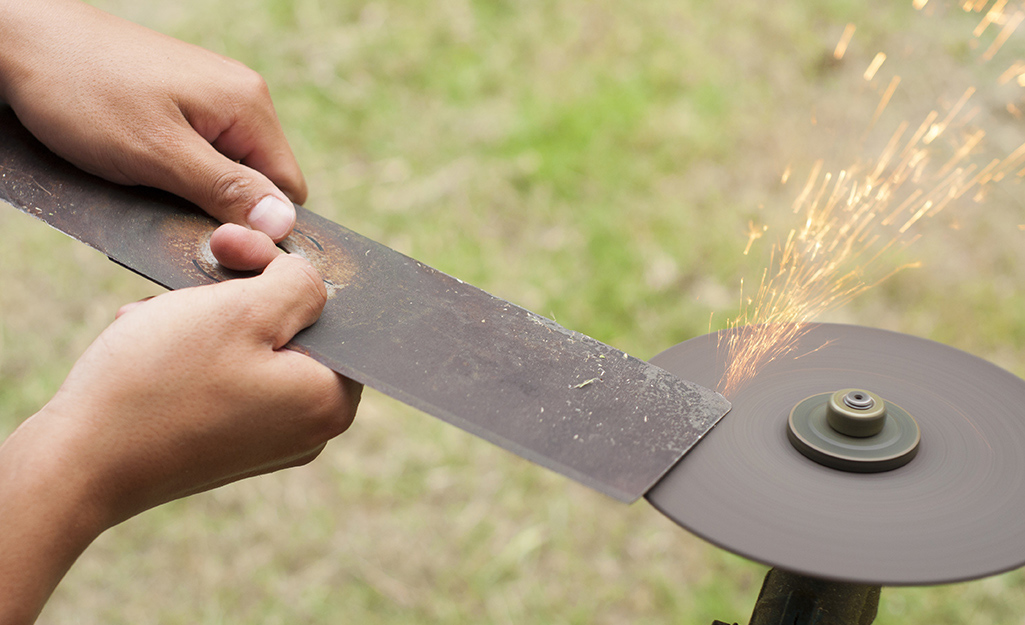
Environmental Impact of Sharp Blades: A Greener Approach
Using sharp lawn mower blades not only benefits your lawn and your mower but also contributes to a healthier environment.
Sharp blades promote healthy grass growth, reducing the need for excessive mowing and the associated fuel consumption. They also minimize the risk of lawn diseases, which can require harmful pesticides.
Choosing the Right Sharpening Tools:
-
Sharpening Stone: For those who prefer a traditional approach, a sharpening stone offers good control and is relatively inexpensive. Choose a medium-grit stone for lawn mower blades.
-
Bench Grinder: If speed and efficiency are priorities, a bench grinder can be a great option. However, it requires more practice to maintain the correct angle and avoid overheating the blade.
-
Sharpening Jigs: These specialized tools help maintain the correct angle during sharpening, especially if using a bench grinder. This can be particularly beneficial for beginners.
Safety First:
-
Eye Protection: Always wear safety glasses when sharpening lawn mower blades to protect your eyes from flying debris.
-
Gloves: Wearing gloves protects your hands from cuts and scrapes while handling the blades.
-
Secure Work Surface: Ensure your work surface is stable and level to prevent the mower blade from slipping during sharpening.
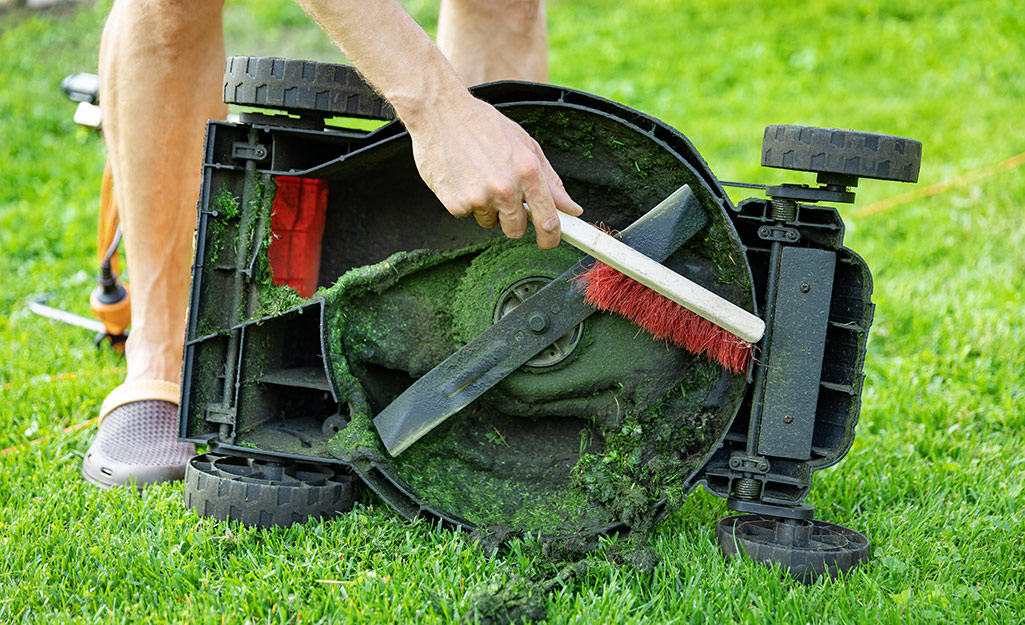
Sharpening Tips:
-
Sharpen Both Sides: Sharpen both the top and bottom edges of the blade for a clean, even cut.
-
Maintain the Angle: Strive to maintain the original angle of the blade during sharpening. A steeper angle may result in a more durable but less efficient cut, while a shallower angle may provide a cleaner cut but be less durable.
-
Sharpen Evenly: Use consistent strokes to achieve a uniform sharpness across the entire length of the cutting edge.
Beyond Sharpening: Blade Replacement
In some cases, depending on the extent of damage or wear, your lawn mower blades may need to be replaced entirely. Here are some signs that a replacement might be necessary:
-
Excessive Nicks or Cracks: Deep nicks or cracks in the blade can compromise its integrity and pose a safety hazard.
-
Bent or Warped Blades: A bent or warped blade will not cut evenly and can damage your lawn mower.
-
Signs of Metal Fatigue: If the blade appears thin or shows signs of metal fatigue, it’s best to replace it for safety reasons.
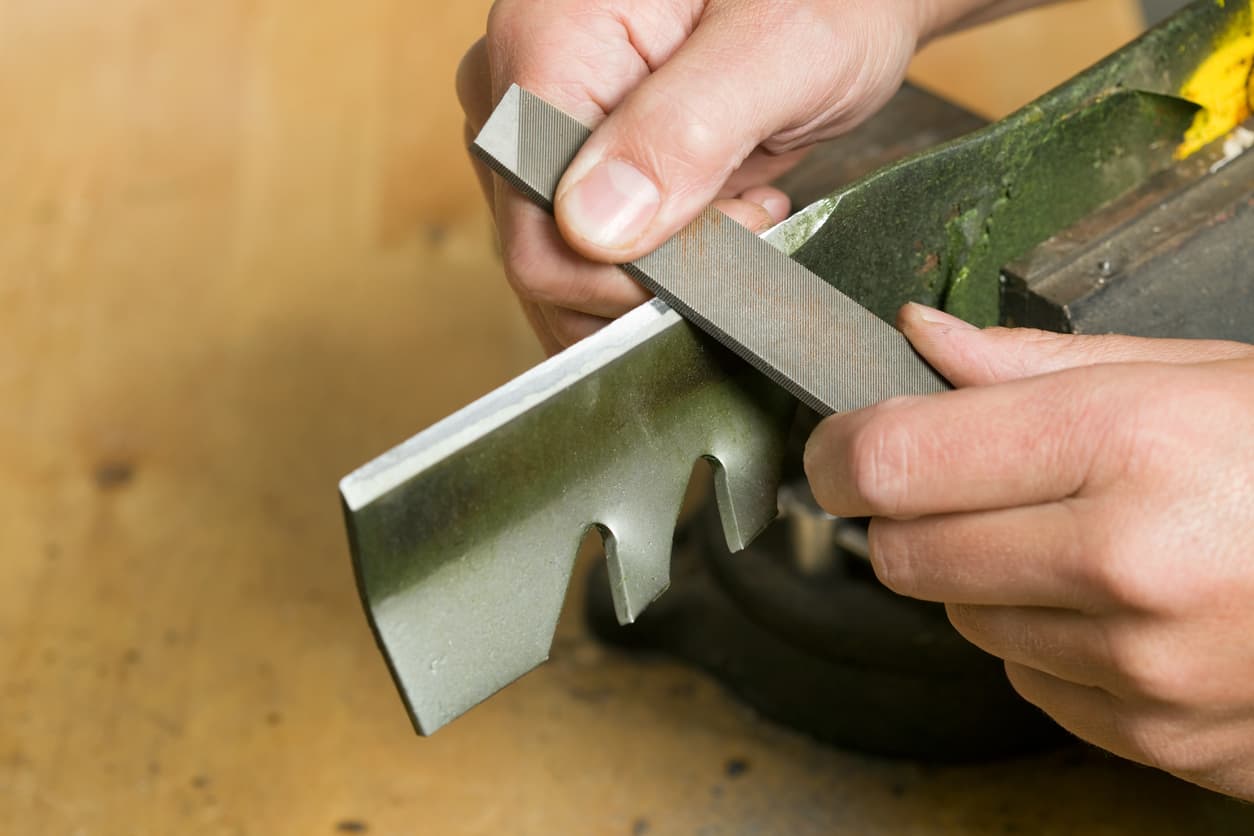
Conclusion: A Final Note
Keeping your lawn mower blades sharp is a crucial aspect of maintaining a healthy lawn and a well-functioning mower. By following the tips and choosing the methods outlined in this guide, you can ensure your lawn remains a source of pride and your mower continues to be a reliable partner in your quest for a perfect green haven. Remember, a little effort on your part can make a big difference in the long run. Now get out there and conquer that overgrown grass with confidence!